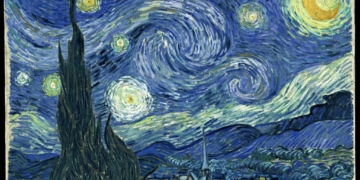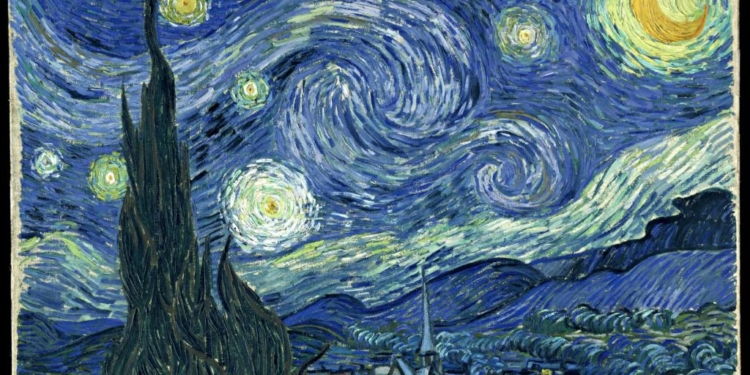

They discovered what they described as “hidden turbulence” in the painter’s depiction of the sky.
Study author Dr Yongxiang Huang said: “The scale of the paint strokes played a crucial role.
“With a high-resolution digital picture, we were able to measure precisely the typical size of the brushstrokes and compare these to the scales expected from turbulence theories.”
To reveal hidden turbulence, the research team used brush strokes in the painting like leaves swirling in a funnel of wind to examine the shape, energy, and scaling of atmospheric characteristics of the otherwise invisible atmosphere.
They used the relative brightness, or luminance, of the varying paint colors as a stand-in for the kinetic energy of physical movement.
Dr. Huang said: “It reveals a deep and intuitive understanding of natural phenomena.
“Van Gogh’s precise representation of turbulence might be from studying the movement of clouds and the atmosphere or an innate sense of how to capture the dynamism of the sky.”
The study, published in the journal Physics of Fluids, analyzed the spatial scale of the painting’s 14 main whirling shapes to find out if they align with the cascading energy theory that describes the kinetic energy transfer from large- to small-scale turbulent flows in the atmosphere.

They discovered the overall picture aligns with Kolmogorov’s law, which predicts atmospheric movement and scale according to measured inertial energy.
Drilling down to the microcosm within the paint strokes themselves, where relative brightness is diffused throughout the canvas, the research team also discovered an alignment with Batchelor’s scaling, which describes energy laws in small-scale, passive scalar turbulence following atmospheric movement.
They said finding both scalings in one atmospheric system is rare, and it was a “big driver” for their research.
Dr. Huang said: “Turbulence is believed to be one of the intrinsic properties of high Reynolds flows dominated by inertia, but recently, turbulence-like phenomena have been reported for different types of flow systems at a wide range of spatial scales, with low Reynolds numbers where viscosity is more dominant.”
He added: “It seems it is time to propose a new definition of turbulence to embrace more situations.”
The Starry Night has been in the permanent collection of the Museum of Modern Art in New York City since 1941.
The painting also inspired Don McLean’s 1972 UK chart-topping single Vincent which begins with the lyrics: “Starry, starry night; paint your palette blue and grey, look out on a summer’s day.”
Produced in association with SWNS Talker

























